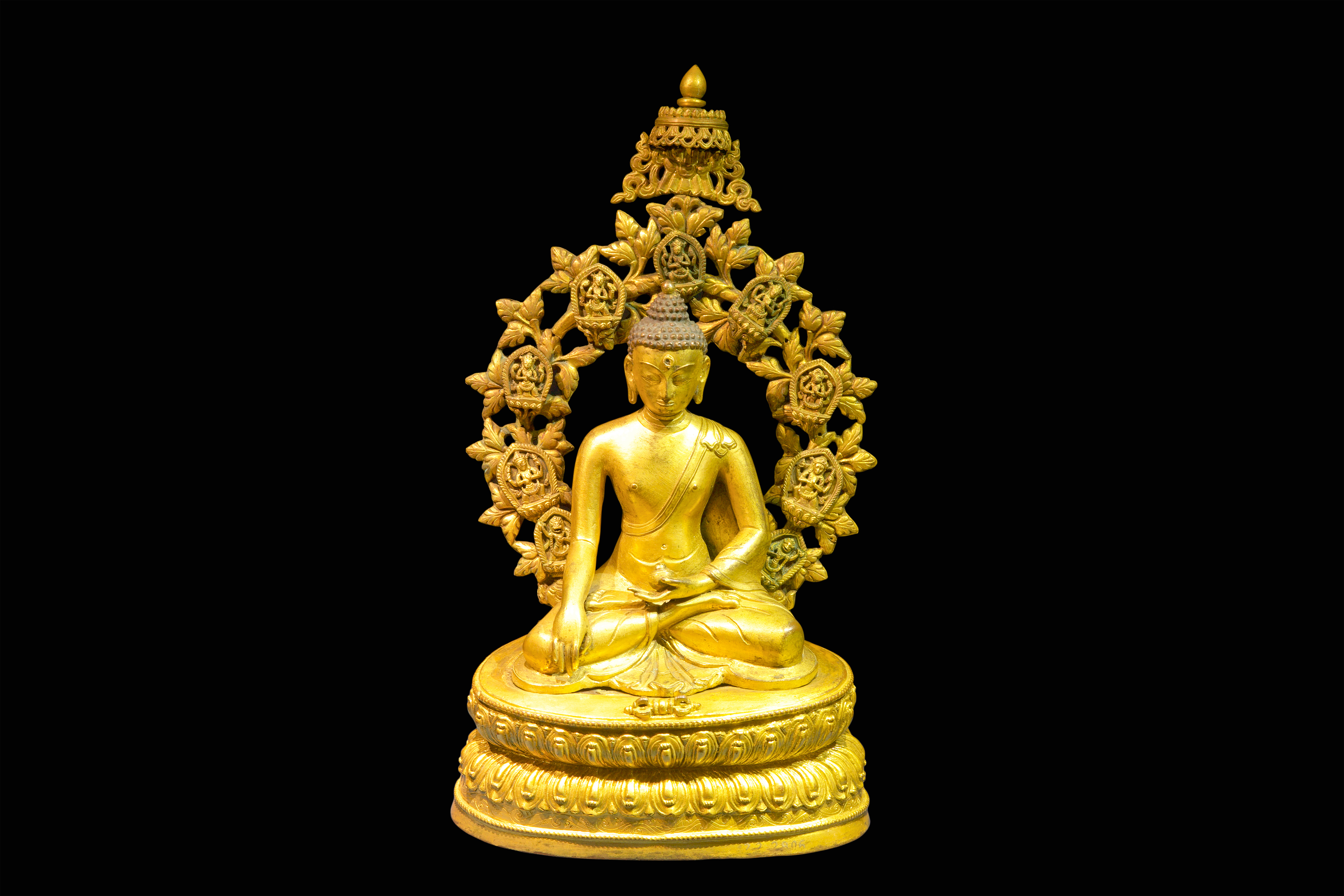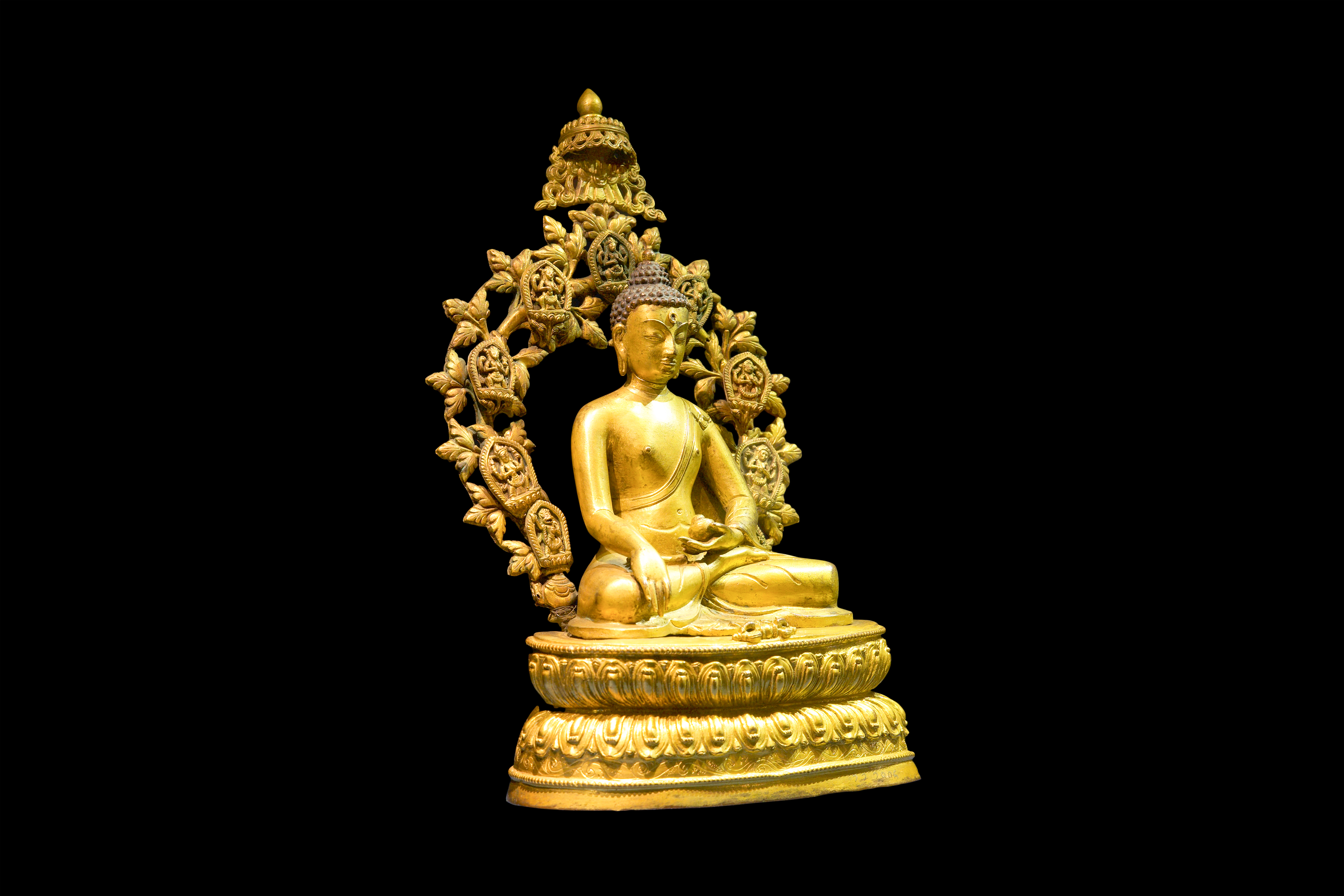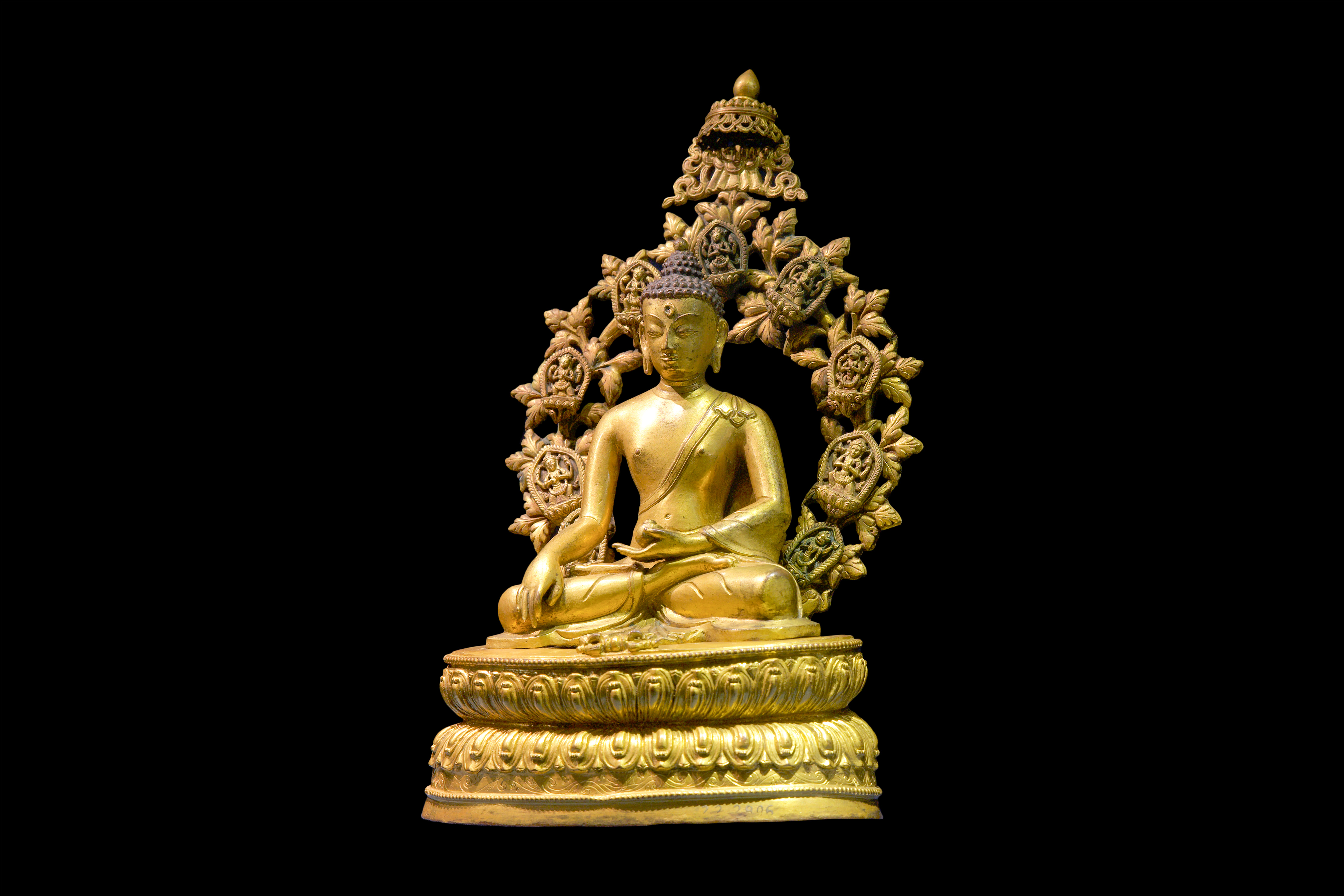Buddha Shakyamuni
Original Location: Nepal
Present Location: Chhatrapati Shivaji Maharaj Vastu Sangrahalaya, Mumbai
Date: 1795 CE
Period: Early Modern
Material: Bronze
Objects: Sculpture
Style: Nepal Samvat
Credits: Sir Ratan Tata Collection
Shakyamuni Buddha is a name given to Gautama Buddha who lived from 566 to 485 BCE in Central North India. The word Shakyamuni means the sage of the Shakya. Buddha is called Shakyamuni because he belonged to the Shakya clan. This clan ruled over the Kapilavastu region. This term has been specifically coined to distinguish Gautam Buddha from the general meaning of the term 'Buddha' which is used to refer to an enlightened individual.
The Buddha is seated on a double lotus pedestal. His right hand is holding a pot and his left hand is in bhumisparsha mudra or the earth-touching pose, suggesting the time of the attack of Mara, the temptress. He touched the earth as he called upon the Earth Goddess to testify to his austerities and meditation. The vajra or thunderbolt identifying the Vajrayana sect is placed in the front. He is clad in sanghati or a plain monastic robe. As an influence of Kashmiri and Eastern Indian art, his eyes show marks of being inlaid.
An interesting and unusual feature is his halo or the Prabha which has a representation of nine goddesses in nine medallions. All of them have four arms. Most of them have fierce faces. Since no iconographical text connects Shakyasimha with the Matrikas or any other female deity, it is difficult to identify them. Though their fierceness would tempt one to identify these as forms of Mara, it is difficult to interpret it until any conclusive evidence is available. An inscription on the rear side of the pedestal reads: 'Greetings to Shakysimha and others. On Wednesday, Uttarabhadra nakshatra, 12th day of the dark half of the Chaitra month of the auspicious year of (N.S.) 915 Dhanadatasiha (Sk. Dhanadatta Simha) of Maduvahi (in Kathmandu) made this image and consecrated it. May it be auspicious.'
Buddha did not propagate idol worship. However, after his death, the faith split into the Hinayana and the Mahayana sects. It was under the latter sect that sculptors began to carve images of Buddha and within a few generations all Buddhist sects took to worshipping images.
 Government of Indiaa
Government of Indiaa




 Recognizing the ongoing need to position itself for the digital future, Indian Culture is an initiative by the Ministry of Culture. A platform that hosts data of cultural relevance from various repositories and institutions all over India.
Recognizing the ongoing need to position itself for the digital future, Indian Culture is an initiative by the Ministry of Culture. A platform that hosts data of cultural relevance from various repositories and institutions all over India.
